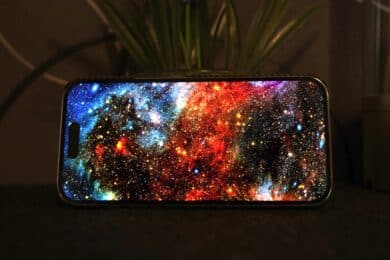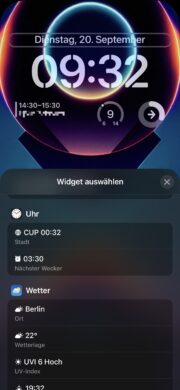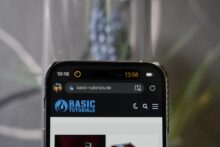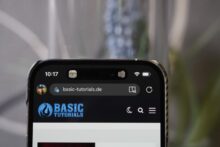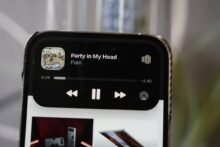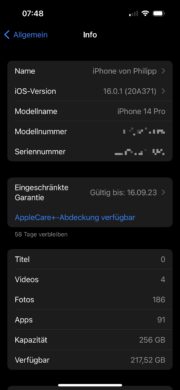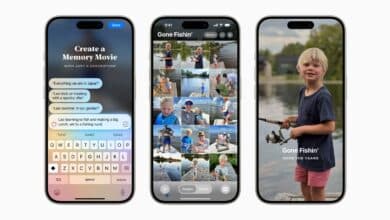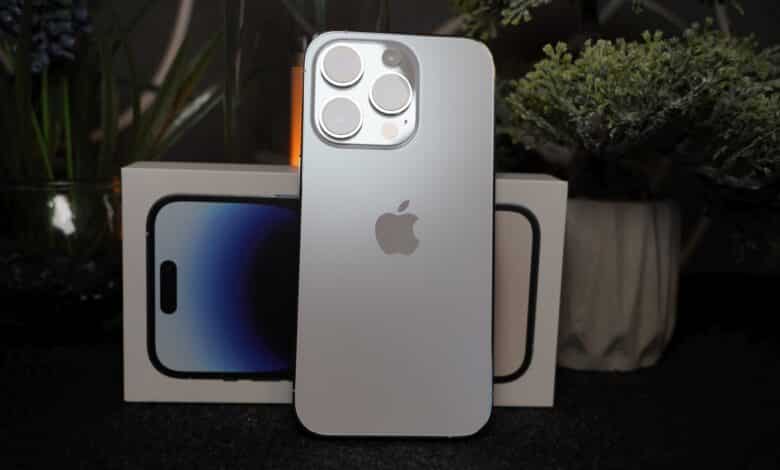
On September 8 Apple introduced the new iPhone 14 generation, and the new smartphones from Cupertino have finally been available since September 16. The demand is huge, even though the new features look modest compared to the predecessor and Apple has significantly increased the price. Our iPhone 14 Pro review explains how good the new small Pro model is and for whom it is worth buying.
- Buy iPhone 14: Why it is worth the wait
Technical Specifications
| Processor | Apple A16 Bionic hexa-core processor with maximum clock speed of 3.46 GHz |
| Display | 6.1-inch Super Retina XDR OLED display; resolution: 1,079 x 2,556 pixels and 120 Hz refresh rate; up to 2,000 nits brightness |
| Camera |
|
| Memory | 6 GB RAM; 128 GB, 256 GB, 512 GB or 1 TB flash storage |
| Network | SIM card slot (nano-SIM) and 5G |
| Connectivity | Lightning port (USB 2.0), GPS, WLAN 802.11 a/b/g/n/ac/6,NFC, Bluetooth 5.3 |
| Dimensions and Weight | 147.5 x 71.5 x 7.79 mm and 206 g |
| Battery capacity | 3,200 mAh with maximum charging power of 20 watts (wireless up to 15 watts) |
| Colors | Space Black, Silver, Gold, Dark Purple |
| Prices (MSRP) | € 1,311.75 * (256 GB) |


Buy iPhone 14 Pro: Who is it worth it for?
Before we get to the actual smartphone, we first want to clarify for whom the iPhone 14 Pro is actually worthwhile. After all, Apple has mainly focused on fine-tuning this year.
The design is, with the exception of the Dynamic Island, the same as in the iPhone 13 Pro. Workmanship, feel, camera arrangement, display size – all the same. Or is it? Of course, the iPhone 14 Pro offers some improvements, but in our eyes, they only appeal to a certain group of buyers.
For example, there are the improved cameras, which are supposed to provide better photos and videos in combination with Apple’s Photonic Engine. Apple also promises two to three times better photos in difficult lighting conditions, while the resolution of the main camera in particular increases to 48 megapixels.
However, you only get the full resolution in ProRAW mode, otherwise the iPhone downscales the photos to the familiar 12-megapixel resolution thanks to pixel binning (which, however, offers additional details).
Another important innovation, which will probably not be a selling point in most cases, is the so-called Dynamic Island. The pill-shaped punch hole in the display replaces the notch that has been common in Apple smartphones for years. Also new is a feature that has been around in the Android segment for quite a few years: the Always-On display, which is always active and displays certain information.
Is the upgrade to the iPhone 14 Pro worth it?
All in all, that’s not much to make a new purchase palatable to owners of the iPhone 13 Pro. In our eyes, the upgrade to the iPhone 14 Pro is only worth it if you (for example, professionally) depend on the improved cameras.
The upgrade is also worthwhile for those who need the most powerful and efficient chip and the best possible battery life. However, everyone else will fare almost as well with the iPhone 13 Pro and save money in the process.
For all those who want to dive into the Apple cosmos for the first time, the new model offers a few real advantages that could justify the additional price of at least 200 Euros. So, whether the iPhone 14 Pro or the iPhone 13 Pro is more worthwhile cannot be answered across the board and depends on the respective application.

Would I choose the current 2022 model? Yes! It is quite simply the best smartphone I have ever used. Why, I explain in the context of the iPhone 14 Pro test.
iPhone 14 Pro review: The scope of delivery
No innovations await you in the scope of delivery of the iPhone 14 Pro, because the manufacturer does without a power adapter again this year. The only exciting thing is the smartphone itself, which is at least supplemented by a USB-C to Lightning cable, a SIM card tool, a few quick guides and the obligatory Apple sticker.
Design and finish
- High-quality premium design
- Excellent choice of materials
- Comfortable feel
Not too much has changed in the design of the iPhone 14 Pro compared to its predecessor. However, there was not much potential for improvement there anyway. Now, one could criticize that hardly anything has changed here for two years, but that was actually not necessary.
The case has become slightly larger this year, so the new Pro model has a depth of almost exactly 8 mm, while the camera setup on the back has become larger and protrudes a bit further from the case.
The smaller Pro model is 147 mm high and 71.5 mm wide. Despite the identical display size, it is thus 8.5 mm smaller in height than the current Android model Sony Xperia 5 IV, minimally flatter, but 4.5 mm wider. Nevertheless, the 206-gram premium smartphone feels great in the hand, which is mainly due to the flattened edges of the frame.
I have really learned to love them by now, because I find that the haptics benefit noticeably from them and the iPhone 14 Pro ultimately fits better (and more securely) in the hand than corresponding counterparts with rounded frames.

Crafting and feel: premium through and through
- Very high-quality workmanship
- Comfortable keys
- Wobbly and dirt-prone back
In any case, the design and workmanship more than live up to the high premium price. Be it the shiny stainless steel frame, the (surprisingly robust) back made of matte glass or the display protected with Apple’s Ceramic Shield, which is supposed to be even more resistant to scratches and drops than last year’s version.
I cannot confirm that yet, but I can draw a comparison to the iPhone 13 Pro, which I also had at home since the release and used normally without screen protection. Several drops included. It is simply the best protection for the front of the smartphone that is currently available. Of course, you should still not expect magic or a miracle.
One small detail that I simply love the iPhone for is the dedicated mute button on the left side above the volume up and volume down buttons. Only OnePlus has something similar in the Android segment, although the current OnePlus 10T model does without the “AlertSlider”.
The keys also convince haptically with a pleasant pressure point and feel. All in all, an excellent build quality that absolutely lives up to the high iPhone 14 Pro price.
What I don’t like so much, though, is that the smartphone wobbles a lot when you put it on the table with the back. This is due to the grown camera lenses, but it could have been solved better. In addition, dust and dirt quickly collect around the lenses.
iPhone 14 Pro Display: The Best Smartphone Display
- High pixel density, 120 Hz, rich colors
- Impressive brightness
Normally, Samsung and Apple fight head-to-head in the race for the best smartphone display. However, the iPhone 14 Pro raises the bar even higher and thus secures the top spot, at least currently.
The OLED screen measures 6.1 inches or 15.5 cm diagonally and has a resolution of 2,556 x 1,1179 pixels (460 ppi). Thanks to ProMotion technology, the refresh rate dynamically adjusts between 1 Hz and 120 Hz, depending on the currently displayed content.

This optionally ensures very smooth scrolling and a fluid display of games, but on the other hand, it also saves battery, which becomes especially useful with the new Always-On display.
Apple has not only improved the color fidelity and intensity compared to last year, but also the brightness. 1,000 nits of typical brightness, 1,600 nits at peak when displaying HDR content, and up to 2,000 nits outdoors are promised by Apple – but without going into exactly when and how the maximum value is reached.
Compared to the iPhone 13 Pro or even Samsung Galaxy S22 Ultra, the new Pro model gets much brighter and scores with rich colors, high contrasts. Watching movies in HDR, current games and photos on the smartphone is simply a pleasure. The outdoor readability, even under direct sunlight, is also outstanding.
Dynamic Island and Always-On display: potential there
- Always-On-Display without real added value
- Dynamic Island with practical functions, but is still in its infancy
Important innovations in the display of the iPhone 14 Pro are of course the notch successor Dynamic Island and the new Always-On Display (short: AOD), which Android users can of course only smile tiredly about.
However, both technologies are a real revolution in Apple’s universe, and the implementation is also partly above the Android competition (colors are still displayed in AOD, for example). Or rather, they can, because they already hint at the potential, but they have not fully exploited it yet.
In my opinion, the always-on display does not represent a real added value. On the one hand, because the number of widgets that can be displayed on it is still limited. On the other hand, because the AOD remains too bright and the display hardly darkens. This has a negative impact on the battery life, even if only slightly – with almost no advantages. Therefore, I deactivated the AOD pretty quickly.
I like the Dynamic Island much better. Meanwhile I have to say. It took me a few days to get used to the new hole in the display. At the beginning, I was bothered by the fact that there is an area above the notch and that it is not flush with the display frame, as it was the case with the notch of the predecessor. Especially since the module is comparatively large due to the complex Face ID technology.

It took me a few days to get used to the Dynamic Island. Now I find the implementation, although still in its infancy in many areas, simply ingenious.
After all, the size of the hole changes depending on the dynamic notifications displayed and opens a mini-window with additional options for operation after tapping. This may sound like a nice gimmick, but it turns out to be a practical little helper in the practical test.
For example, to quickly adjust the music controls, or view additional details. However, it will be exciting to see what additional features Dynamic Island will bring in the future. In any case, potential is there.
Performance: How the new A16 chip performs
- Better CPU and GPU speeds
- Excellent system and gaming performance
The iPhone 14 Pro, unlike the regular iPhone 14, relies on Apple’s new A16 chip. This relies on a 6-core CPU along with a 5-core GPU and a 16-core Neural Engine. According to Apple, it is supposed to work about 10 percent faster on average than the A15 in the predecessor.
However, the new SoC is now manufactured in a 4 nm process, similar to the current Android flagship Snapdragon 8+ Gen 1 from Qualcomm. This should result in a much better energy efficiency and longer battery runtime at the same time.
In terms of system performance, Apple has already been playing in a league of its own for years. Switching between applications, multi-tasking and other everyday tasks is handled smoothly, without lags and errors on the 14 Pro. Which was to be expected.
I was also surprised by the results from the benchmark and gaming tests, where the A16 chip marks a new top score. In the Geekbench 5 test, the iPhone 14 Pro achieved a single-core score of 1,873 points, as well as 5,517 points in the multi-core test. This leaves the iPhone 13 Pro (1,708 / 4,659 points) and the Android competition clearly behind.
The 3DMark Wild Life Extreme test also shows noticeable, albeit not quite as clear, performance leaps compared to the 13 Pro. In any case, the smartphone easily copes with all demands in the real-life test.
The new A16 chip is well equipped for demanding games like Genshin Impact as well as for mobile editing of 4K ProRes videos and has more performance reserves than most users will ever need.
Battery: runtime and charging time
- First-class battery runtimes
- One and a half to two days of battery life
Apple does not specify the battery capacity of its smartphones in milliampere-hours (mAh), as is common practice with Android. However, we now know that the battery has a capacity of 3,200 mAh. In contrast, the iPhone 13 Pro has 3,095 mAh. Values that seem downright ridiculously low compared to the Android range.
However, the cooperation of hardware and software has always ensured impressive runtimes for Apple. This is also the case with the new iPhone 14 Pro, which is slightly inferior to its predecessor in terms of battery life – at least with the Always-On Display turned on.
If you turn off the AOD, the 13 Pro and 14 Pro achieve almost identical runtimes. These are rather difficult to measure, but I will say this: It should be technically almost impossible to empty the smartphone in one day.

The Google Pixel 6 Pro, whose runtimes have improved a lot recently, served as a direct comparison. On a day of intensive use, I ran out of steam after 6-7 hours with the display on in the evening, while the iPhone 14 Pro (also with over 6 hours of display-on time) still had around 40 percent battery capacity in the evening. I could also observe something similar in the iPhone 13 Pro before.
Even though the iPhone Pro models – apart from the extreme Pro Max variants, which dominate all the best lists – do not reach a top position in benchmarks, the battery life is still unmatched for me.
A day and a half runtime
- 10 hours of real(!) display usage no problem
- Battery charges comparatively slowly
- Wireless charging via MagSafe
In the everyday practical test, I easily get one and a half to two days of runtime despite intensive use, and that without having to activate the power-saving mode. Around 10-11 hours of use with an active display (including YouTube, WhatsApp, mobile games and much more) are no problem at all.
However, Apple should slowly improve the charging time. A charging speed of 20 watts is really not up to date, and a complete charging process takes about 1 hour and 45 minutes.
However, I can easily live with this due to the long runtime. In any case, I prefer the combination much more than a battery that lasts half as long, but charges twice as fast.
The iPhone 14 Pro in the camera test
- Excellent, improved camera setup
- Excellent level of detail
- Very good macro mode
So let’s finally get to the cameras, which are, after all, the biggest upgrade in the iPhone 14 lineup. After all, you can expect the biggest change in years on the Pro model thanks to the new 48-megapixel sensor. There are also significant improvements in low-light shooting, at least if you believe Apple’s promises. The selfie camera is also improved and now features autofocus.
As a self-confessed smartphone photographer, I personally attach a lot of importance to the results and used the Google Pixel 6 Pro (our review) in a direct comparison. Both smartphones are capable of taking excellent photos. They both come with their very individual advantages and disadvantages.
The iPhone 14 Pro relies on three cameras on the back:
- 48 megapixel main camera; aperture: f/1.78; 24 mm focal length (2x optical zoom)
- 12 megapixel ultra-wide angle camera; aperture: f/2.2; 13 mm focal length (macro mode)
- 12 megapixel telephoto camera; aperture: f/2.8; 77 mm focal length (3x optical zoom; 15x digital)
Photo quality and comparison to the Pixel 6 Pro
Photos are taken by the smartphone with the main camera with 12 megapixels by default. Here, the 48-MP images are combined using pixel binning, which ensures more details and less image noise in low-light conditions in practice.

The quality of the images is excellent across all cameras. Personally, I find the shots minimally better than those of the iPhone 13 Pro – especially in terms of the level of detail and the quality in the low-light range. However, the previous year’s model already took excellent pictures. You only notice the difference in a direct comparison, but it is recognizable.
Especially compared to the Google Pixel 6 Pro, the pictures from the iPhone 14 Pro show more details and a higher dynamic range. At least in most cases, because the Google flagship has the edge in some scenarios.

The iPhone images the warmer image in most cases, with the shot looking more like the real thing than in the case of the Pixel 6 Pro. Especially in night and indoor shots, the iPhone 14 Pro performs much better in terms of quality.
In some cases, however, the Google model shows the warmer colors, while the Photonic Engine sharpens more when zoomed in fully. In return, the white balance is more in line with reality. In contrast, the iPhone 14 Pro clearly distances the Pixel 6 Pro in selfies and macro shots.

In fact, the Apple smartphone has excellent macro capabilities, thanks to which you can capture small objects or animals with an impressive level of detail on the virtual photo paper.
When it comes to zoom, however, the 14 Pro can’t keep up with the best Android competition like the Samsung Galaxy S22 Ultra. The 2x and 3x zoom are optical and of very good quality, and the 10x digital zoom is also okay. Beyond that, however, the picture quality decreases quite a bit, and it is already over after a 15x magnification.
Unedited macro shots of the iPhone 14 Pro.
Unedited test photos of the iPhone 14 Pro
JPEG vs ProRAW: The 48-MP Advantage
Furthermore, the ProRAW recordings turn out to be no less impressive. The only way to take advantage of the full 48 megapixels. Provided you have enough memory, because here a single photo takes up to 120 megabytes of space.

Photos are thereby recorded in a resolution of 8,064 x 6,048 pixels and in .DNG format (digital negative format), which can be edited with Adobe Lightroom and other raw converters, for example. However, transfer to a PC or notebook is only possible via cable. Unlike all other photos, the RAW files do not end up in the iCloud database.
Once again, I’m impressed with the level of detail that’s in the raw images here. Although the iPhone 14 Pro does a really good job of processing the images in most cases thanks to the new Photonic Engine, it is sometimes a bit too aggressive. Of course, you can counteract this with the raw shots and adjust the images to your liking.
Video quality
When it comes to videos, the iPhone 13 Pro (Max) already marked the spearhead of what smartphones are currently capable of and has not been ousted from the video throne to this day. The iPhone 14 Pro takes this a step further – even though the differences are minimal.
The Cinema Mode from last year is once again part of the game, and ProPres recordings are also possible in 4K with 60 frames per second (although only on smartphones with at least 256 GB of storage). With the front camera, recordings are possible at a maximum of 4K and 30 frames per second.

In terms of quality and stabilization, the iPhone 14 Pro once again secures the top spot. New, however, is the action mode, which reduces the resolution to 2.8K (at 60 FPS), but offers simply impressive image stabilization in return.
Even at jogging speed, the image remains stable as if I were merely walking slowly. Absolutely impressive, even for someone who rarely shoots video.
Speakers, connectivity and more
Once again, Apple has done very well with the excellent stereo speakers built into the iPhone 14 Pro. They achieve an impressive volume and reach a sound level that even puts many Bluetooth speakers in the bag.
In terms of connectivity, the new edition also shows improvements in detail. Mobile data is transmitted even faster, not only around the 5G network, while the Wi-Fi modem has also been optimized and can access almost the full bandwidth.
The 14 Pro now supports Bluetooth in the 5.3 standard, which ensures a more reliable connection and higher ranges. Whether the new Bluetooth LE audio standard will be supported in the future is still unclear. In any case, the technical requirements are there.

The iPhone 14 Pro is also shipped from the factory with iOS 16, which brings numerous improvements. We have summarized more about this in our overview. Just so much: I find the functions of being able to simply cut people or objects out of pictures or to copy texts out of videos simply ingenious.
iPhone 14 Pro review: conclusion
After the detailed iPhone 14 Pro review, I’ll try to keep it short when it comes to the conclusion. The new smartphone undoubtedly marks the best iPhone Apple has ever built. But is it also the best smartphone currently available? Not necessarily. And an update for owners of the predecessor is only worthwhile in very few cases.
The design and build quality are beyond reproach, and the cameras are on an outstanding level – although the artificial software enhancement is too aggressive for me. And a Galaxy S22 Ultra simply offers the better zoom by far. On the other hand, the video modes are further improved and still industry-leading.
The battery life is still outstanding, but the charging time is still below average. It is about time for an upgrade here. The always-on display is nice, but the implementation is rather suboptimal in my eyes since it is much too bright and offers little real added value. I like the Dynamic Island much better, even though the potential is only hinted at so far.
The iPhone 14 Pro has a lot to offer for the exorbitantly high (and even higher) price, but real innovations or improvements compared to the predecessor are rather limited. In nine out of ten cases, the iPhone 13 Pro is almost as good a choice.
However, the compact size of 6.1 inches should not be neglected. There is no other device in the entire smartphone segment that can hold a candle to the Pro model. The calculation is simple: If you want the best smartphone in the Apple universe, you will take the 14 Pro. However, everyone else will be served almost as well with the predecessor.
iPhone 14 Pro
Workmanship
Hardware
Multimedia
Performance
Battery
Value for money
93/100
The iPhone 14 Pro is the best smartphone Apple has ever built. Compared to the predecessor, everything is a bit better, but the differences are too small for most people.










